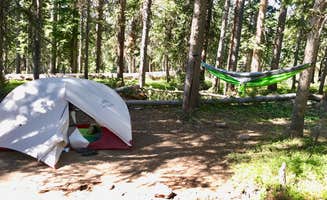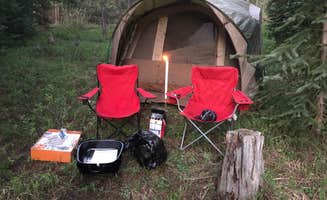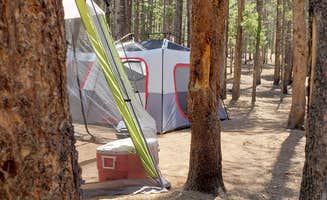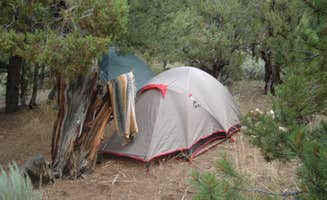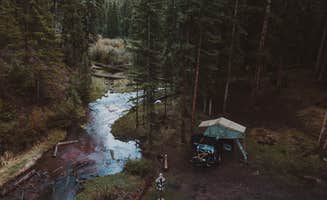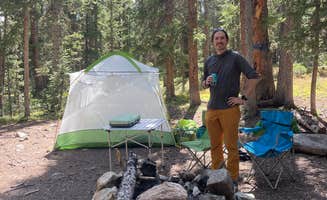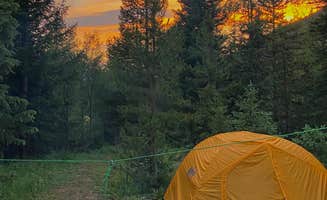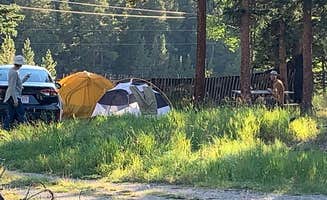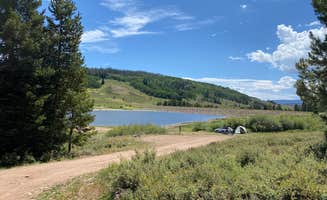Tent campsites near Avon, Colorado offer varied terrain at elevations between 7,400-10,000 feet with temperature drops of 20-30 degrees from day to night, even in summer months. Most sites remain accessible from late May through mid-October, with earlier access at lower elevations. Roads to many campsites become impassable during winter and spring snowmelt.
What to do
Hike to alpine lakes: The trail to Lost Lake offers a moderate challenge with swimming opportunities during warmer months. "You can drive or walk down a mile which leads to a trail to Lost Lake, which you can swim in. It was definitely buggy, got my fair share of mosquito bites, so I recommend bug spray," notes Ali S.
Mountain summit attempts: Halfmoon Campground serves as a base camp for climbing Mount of the Holy Cross. "Used this campground as a base to hike Mt Holy Cross; a challenging but doable hike for fit folks. Use extreme caution choosing when to hike in regards to weather; hikers are exposed for a long time across scree fields and a windy ridge," reports Juliette.
Wildlife observation: Camping areas around Avon provide opportunities for wildlife viewing, particularly during early morning and evening hours. Early summer offers the best moose sightings at higher elevations. Many campers report successful deer and elk viewing from roadside campsites.
What campers like
Stargazing opportunities: The elevation and minimal light pollution create excellent night sky viewing conditions. At Boreas Pass Road Designated Dispersed Camping, campers experience exceptional celestial views. "The views were absolutely breathtaking, with sweeping mountain scenery that made every moment feel special. Being at a higher elevation, one person in our group did experience some mild altitude discomfort," notes Jenny B.
Creek-side camping: Many campers prefer sites along water sources despite higher mosquito presence. "We took a left up the hill and found a more secluded spot, but that road was tight (probably not worth it in a van)," advises Amber M. about navigating to quieter spots beyond the busier creek-side areas.
Aspen groves: Fall camping brings spectacular foliage displays, particularly in late September. "Went out late on a Friday night. My timing was wrong to get a good spot, but I was hoping there would be at least one spot left...incredible views of the stars and absolutely gorgeous to see the Aspen leaves changing!" reports hercules N. about Red Sandstone in autumn.
What you should know
Road conditions vary significantly: Access to most dispersed camping requires careful driving on unmaintained roads. At Homestake Reservoir Rd Milemarker 3, Jeff H. reports, "Road out was a little bumpy but a 2 wheel drive sedan could easily make the trip. Quite a few ppl were camping along the road but still super quiet."
Seasonal closures limit access: Many forest service roads open later than anticipated. "Closed off road access unfortunately till June 20. Beautiful and the road can get a little wonky but you're gonna have to hike it up for a bit!" warns Nora S. about spring conditions.
Temperature fluctuations: Prepare for cold nights even during summer months. At higher elevations, temperatures regularly drop below 40°F overnight in July and August. Campers commonly report needing winter sleeping bags during summer camping trips.
Tips for camping with families
Site selection for privacy: When camping with children, look for areas set back from main roads. At Blue Lake Camp, Isabelle K. describes, "The lake is accessible by hiking trails and by 4x4 roads, if driving I would highly recommend a high clearance vehicle as many of the ruts on the road are very deep. I have camped here many times, in the summer you are likely to be sharing the lake with another group or two but it is never crowded."
Plan for bug protection: Mosquitoes are particularly aggressive near water sources during June and early July. Multiple reviews mention the necessity of mosquito repellent, head nets, and enclosed shelter options for younger children.
Water availability considerations: No drinking water exists at most tent campsites. Plan to carry 1-2 gallons per person per day or bring purification systems for creek water.
Tips from RVers
Access limitations: Most dispersed camping areas near Avon have significant restrictions for larger vehicles. "Definitely would advise 4x4, and not for travel trailers at all. Bringing one up could lead to a serious situation, since there are no places to turn around whatsoever," warns Adam D. about camping at Bellyache Road.
Limited turnaround space: Forest service roads often lack suitable areas to turn larger vehicles. Several reviews mention getting stuck and requiring assistance when attempting to navigate narrow roads in larger rigs.
Limited services: No dump stations or hookups exist at most camping areas. The nearest full RV services require returning to towns along I-70 corridor.


